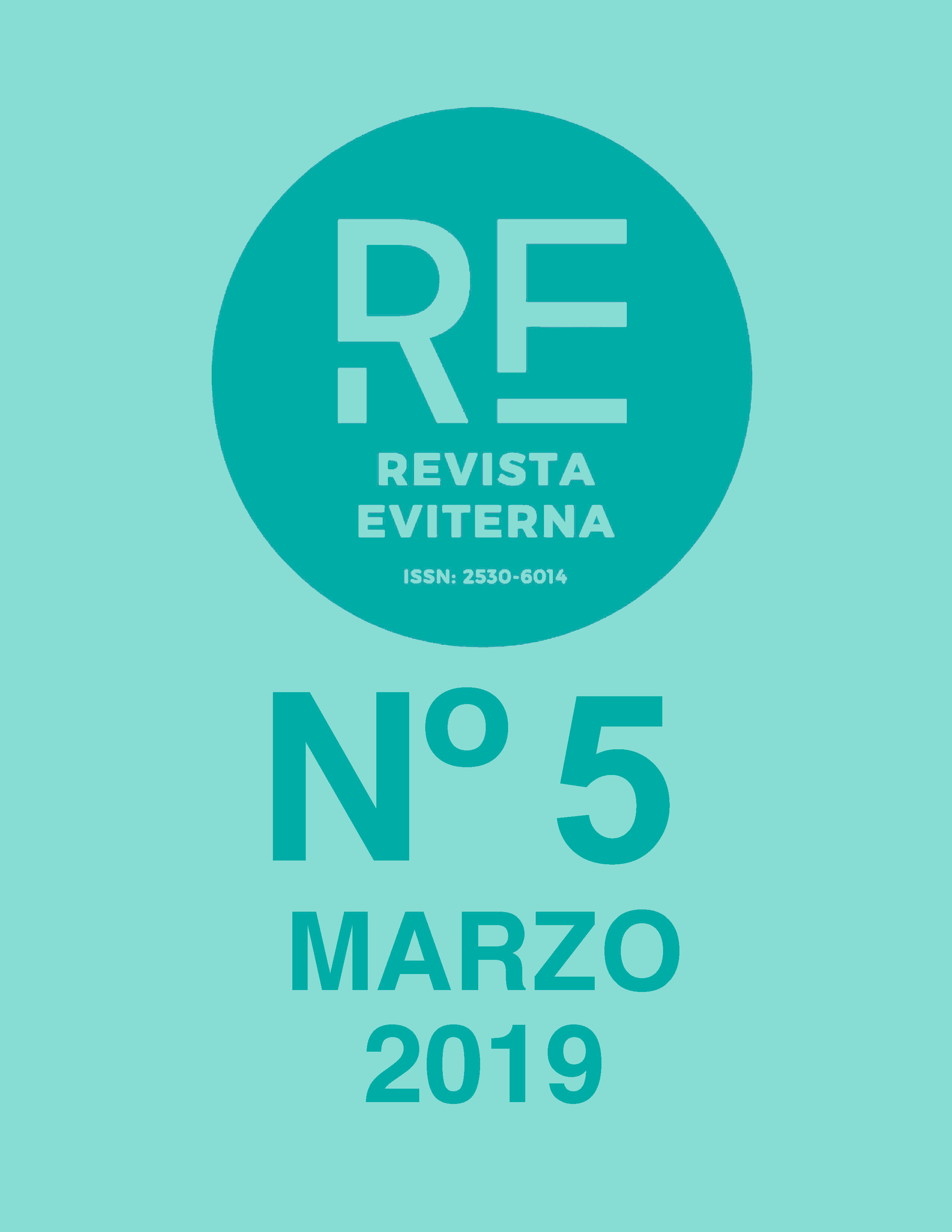Bacchus or Saint John the Baptist: reading a painting by Leonardo da Vinci
DOI:
https://doi.org/10.24310/Eviternare.v0i5.8082Keywords:
??????????????Dionysus Bacchus, St John the Baptist, the opposites, tyrso, deer, Orphic eggAbstract
We make a reading of the painting Bacchus or St John the Baptist, based on a method that applies to it the classic myth of Dionysus-Bacchus. We divide its content into three parts: 1. Introduction (objective and method; the double name, Dionysus-Bacchus; narration of the myth in ?????????????????) 2. Reading of the painting(hipothesis of the representation as St John the Baptist: some opinions; hipothesis of the representation as Bacchus: our opinion) 3. Conclusion (Leonard's Bacchus: an interpretation of Dionysus-Bacchus as neutralizer-God of the opposites. We make punctual comparisons with Jheronimus Bosch.
Downloads
Metrics
References
CIRLOT, Juan Eduardo (2006). Diccionario de símbolos.Siruela: Madrid.
DARAKI, María (2005). Dioniso y la diosa Tierra, Traducción B. Gala y F. Guerrero. Abada: Madrid.
ECHARTE, María José
-(2017), “Sobre el Jardín de las Delicias del Bosco: el hombre devorado por perros salvajes”, Publicaciones didácticas,Nº87, pp. 412-419.
-(2018a), “La Raíz de la Vida indestructible en 'El Juicio Final' de El Bosco”, Publicaciones didácticas, Nº92, pp. 352-9.
-(2018b), “El huevo órfico: sobre el origen femenino de la vida en El Bosco”, Publicaciones didácticas, Nº 94,pp. 458-465.
-(2018c), “Expresión de la locura en la pintura de El Bosco”, Publicaciones didácticas, Nº 99, pp. 441-450.
-(2018d), “El mito dionisíaco en el Tríptico de las Tentaciones de San Antonio Abad”, Publicaciones didácticas, Nº 101, pp. 298-306.
EURÍPIDES
-(1969). Euripidis Fabulae, edición de G. Murray, T.III. E Typographeo Clarendoniano: Oxford.
-(2001). Tragedias…Bacantes. Introducción, Traducción, Notas, C. García-Gual. B.B. Gredos: Madrid.
HESÍODO (1928). Theogonia... edición de P. Mazon. Les Belles Lettres:París.
HOMERO (1967). Homère Iliade, III, edición de P. Mazon. Les Belles Lettres: París.
KERÉNYI, Karl
-(1988). Dionisios, Raíz de la vida indestructible. Herder: Barcelona.
-(2004). Eleusis, imagen arquetípica de la madre y la hija. Madrid: Siruela,
-(2010a). Imágenes primigenias de la religión griega, Hermes conductor de almas (II). Sexto piso: Madrid.
-(2010b). Imágenes primigenias de la religión griega, Misterios de los Cabiros (III). Sexto piso: Madrid.
MAESTROS DE LA PINTURA (1989) T.I. La obra completa de Leonardo. Editorial Origen: Barcelona.
NIETZSCHE (2007). El nacimiento de la tragedia. Alianza editorial: Madrid.
NONO DE PANÓPOLIS
-(1995). Dionisíacas,I, Intr., Traducción, Notas, S. MANTEROLA y L. PINKLER. B.C. Gredos: Madrid.
-(2008). Dionisíacas,III, Intr., Traducción, Notas, D. HERNÁNDEZ DE LA FUENTE. B.C. Gredos: Madrid.
OTTO, Walter F. (2006). Dioniso, Mito y culto,Traducción C. García Ohlrich. Siruela: Madrid.
RUIZ DE ELVIRA, Antonio (1995). Mitología Clásica. Gredos: Madrid.
SÓFOCLES (1964). Sophoclis Fabulae, edición de A. C. Pearson. E Typographeo Clarendoniano: Oxford.
TIKAL, Obra Colectiva I. Leonardo da Vinci. Susaeta ediciones: Madrid.
ZATÓN, Jesús (2018). El Renacimiento oculto I. Espiritualidad y Esoterismo en el Arte del Renacimiento. Fundación Rosacruz: Villamayor (Zaragoza)
https://es.wikipedia.org/wiki/Praxíteles#/media/File:Hermes_di_Prassitele,_at_Olimpia,_front.jpg.(consulta 18/11/2018)
https://es.wikipedia.org/wiki/Baco_(Leonardo) (consulta 26/11/2018)
https://en.wikipedia.org/wiki/Leonardo_da_Vinci. (consulta 26/11/2018)
https://en.wikipedia.org/wiki/Bacchus_(Leonardo)#/media/File:Bacchus_(painting).jpg(consulta 22/11/2018)
https://www.youbioit.com/es/article/24043/baco-de-leonardo-da-vinci?size=_original(consulta 20/10/2018)https://es.wikipedia.org/wiki/Tirso_(símbolo)#/media/File:Fragment_Maenad_Louvre_G160.jpg.(consulta16/11/2018)
https://es.wikipedia.org/wiki/Ménades#/media/File:M%C3%A9nade_relieve_romano_(Museo_del_Prado)_02.jpg(consulta 23/11/2018).
Downloads
Published
How to Cite
Issue
Section
License
All the contents published in Revista Eviterna are subject to the Creative Commons Reconocimento-NoComercia-Compartirigual 4.0 license, the full text of which can be found at <http://creativecommons.org/licenses/by-nc-sa/4.0>
They may be copied, used, disseminated, transmitted and publicly exposed, provided that:
The authorship and original source of your publication (Journal, editorial and URL of the work) are cited.
They are not used for commercial purposes.
The existence and specifications of this use license are mentioned.

Copyright is of two kinds: moral rights and patrimonial rights. Moral rights are perpetual, inalienable, inalienable, inalienable, inalienable and imprescriptible prerogatives.
In accordance with copyright legislation, Revista Eviterna recognizes and respects the moral rights of the authors, as well as the ownership of the economic right, which will be transferred to the University of Malaga for dissemination in open access.
The economic rights refer to the benefits obtained by the use or disclosure of the works. Revista Eviterna is published in open access and is exclusively authorized to carry out or authorize by any means the use, distribution, disclosure, reproduction, adaptation, translation or transformation of the work.
It is the responsibility of the authors to obtain the necessary permissions of the images that are subject to copyright.






12.png)
